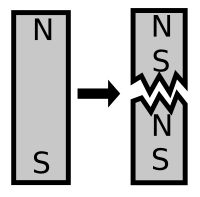
Photo from wikipedia
Numerical models based on the finite-element method (FEM) are popular tools for investigating the macroscopic electromagnetic behavior of high-temperature superconductor (HTS) applications. This article explains how to use the T… Click to show full abstract
Numerical models based on the finite-element method (FEM) are popular tools for investigating the macroscopic electromagnetic behavior of high-temperature superconductor (HTS) applications. This article explains how to use the T -A formulation for modeling HTS coils in 2D with different coupling scenarios between the turns. First we consider a racetrack coil wound from one piece of superconducting tape. Then we consider a coil obtained by winding a cable composed of different HTS tapes. In the latter case, the tape turns are either electrically connected along their entire length or just at the two ends of the coil: in the model, these two different types of electrical connection are implemented with the help of the electrical circuit module. The current density distributions and the AC losses of the coils in the different coupling scenarios are compared and discussed. The limits of applicability of the presented approach are pointed out. The model is developed for the straight section of racetrack coils, but can be easily adapted to axisymmetric geometries.
Journal Title: IEEE Transactions on Applied Superconductivity
Year Published: 2022
Link to full text (if available)
Share on Social Media: Sign Up to like & get
recommendations!